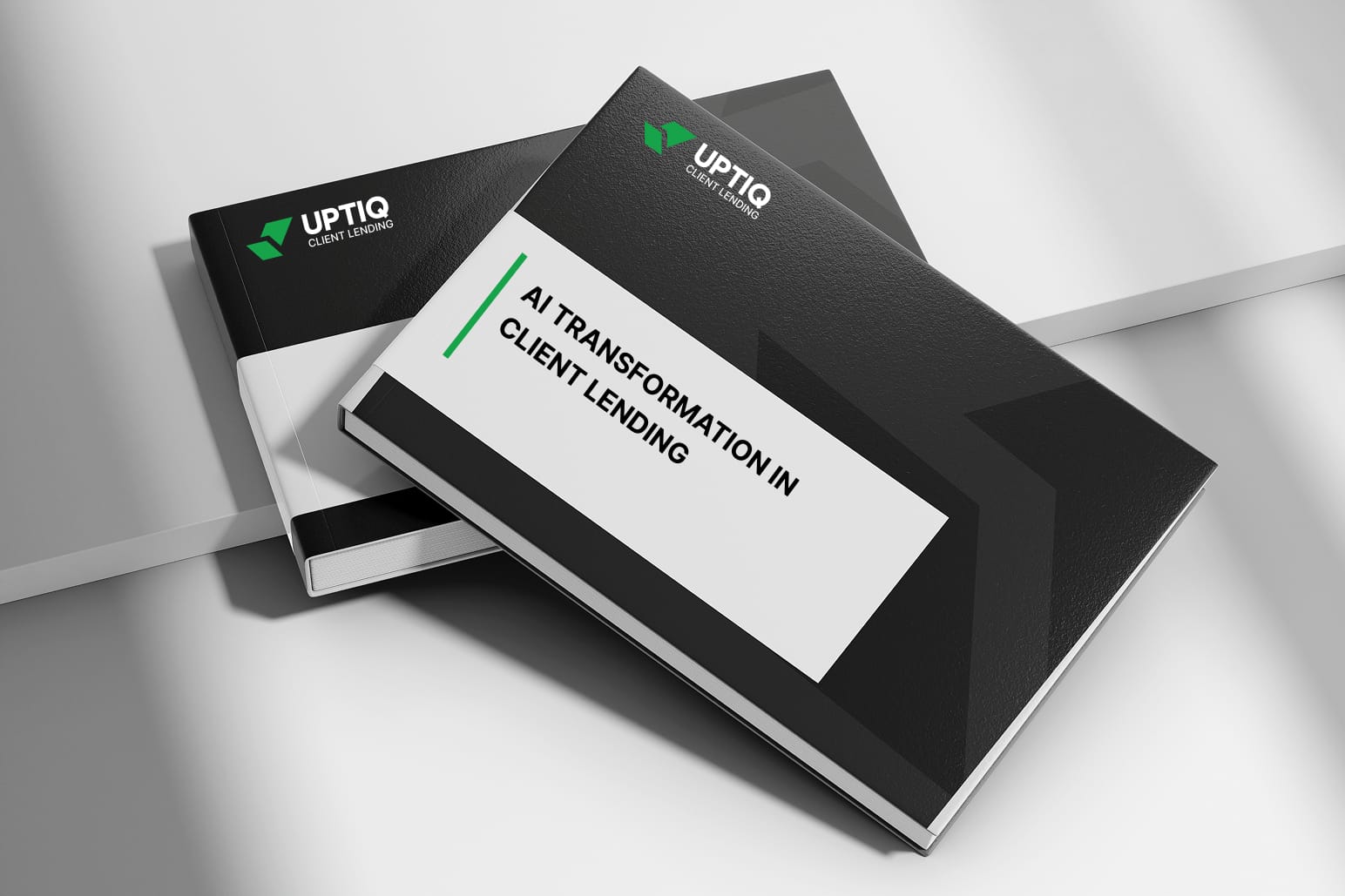The Psychology of Lending: Why Advisors Avoid Loan Conversations
Resource
-
Resource


The world of lending is changing. Gone are the days when lending was a slow, manual, spreadsheet-driven process.
High expectations, competition from fintechs, and digital-first clients demand faster, smarter, more seamless lending experiences.
For Registered Investment Advisors (RIAs) and wealth managers looking to expand into lending or better serve existing clients, artificial intelligence (AI) is not optional — it’s a must.
AI transformation in client lending is already underway.
Platforms like Uptiq’s Client Lending enable advisors and financial institutions to automate origination, optimize risk, and deliver superior client experiences—without sacrificing control or compliance.
In this blog, we walk through:
The loan origination process is where a client’s journey from application to disbursal begins.
Historically, this has involved heavy manual work — data gathering, validation, credit checks, underwriting desk reviews, documentation.
AI is transforming this front end in several key ways:
One of the early pain points in origination is gathering client data: financial statements, tax returns, bank statements, KYC documents, contracts. AI (especially via document intelligence models) automates:
This cuts down manual data entry errors and accelerates the initial underwriting funnel.
Many AI lending platforms report significantly faster document review times.
AI models can analyze a mix of traditional and alternative data — credit history, transaction behavior, cash flows, business metrics — to generate risk scores or probability of default estimates.
For RIAs and wealth managers, this means:
Per industry sources, AI in underwriting significantly improves speed and decision accuracy.
Because many lending cases are complex (e.g., clients with multiple income streams, investments, or alternative assets), AI doesn’t always fully automate decisioning. Instead, it helps advisors by:
This turns advisors into better decision-makers—spending less time assembling data and more time advising clients.
One powerful architectural approach is to embed AI functions modularly (e.g., document intelligence, credit scoring, compliance checks) within the origination workflow, rather than building one monolithic AI system.
This ensures each AI output is explainable, traceable, and auditable.
This modular approach helps balance innovation and regulatory control, which is especially critical in wealth and advisory settings.
When AI is applied intelligently, the gains are not theoretical — they’re measurable across speed, cost, risk, scalability, and experience.
Automation in underwriting and decision engines accelerates the frequently slowest steps of origination.
Industry sources point to cost savings from loan automation as a key advantage.
Some lenders have reported improved approval rates with no increase in risk exposure by using AI-driven decisioning.
With AI automation, wealth firms and advisory units can scale into lending without proportional increase in staff or operational burden. This opens new revenue streams and deepens client relationships.
AI-powered systems don’t stop at origination — they continue to:
This lifecycle automation ensures operational efficiency and risk control beyond approval.
Now, let’s bring it home: how exactly Uptiq’s Client Lending Platform empowers RIAs, wealth managers, and financial institutions to realize this AI transformation in client lending.
Uptiq integrates all phases of origination in one platform: from intake, document processing, underwriting, to decisioning. The AI components are embedded modularly for auditability and human oversight.
Wealth advisors and RIAs get guided workflows and dashboard insights—AI highlights risk factors, suggests optimal terms, and surfaces exceptions that need manual review.
Uptiq’s architecture allows its AI modules to plug into legacy onboarding systems, CRM, core banking, and lending systems — no full replacement required.
Advisors and compliance teams can set guardrails, thresholds, and business rules. AI decisions are explainable and logged in an audit trail, crucial for regulatory compliance in wealth and advisory domains.
As more loan journeys pass through Uptiq, its AI models continuously learn, adapt, and improve — increasing predictive accuracy and decreasing friction over time.
With AI automating repetitive work, advisory teams can scale lending offerings without needing proportional operational expansion. This allows you to add lending as a value-add rather than a burden.
An RIA wants to offer clients liquidity options (e.g. lines of credit, mortgage-backed lending) but doesn’t want the operational burden. Uptiq’s AI-powered origination lets them:
This helps the RIA become a one-stop financial advisor rather than losing clients to banks for lending.
A wealth management firm gives repeat loans (margin, working capital) across its client base. Using AI automation, the system:
This improves internal efficiency and client satisfaction.
A credit union with an advisory service arm uses Uptiq for its lending offers:
They dramatically reduce underwriting burden and speed member lending.
To successfully drive AI transformation in client lending, here are best practices:
AI decisions must be auditable and understandable—especially in wealth/advisory contexts.
Start with less complex use cases (small loans, low-risk segments), then expand into more complex lending.
Even with high automation, human review should exist for exception cases to maintain trust.
AI is as good as its data. Ensure clean data pipelines and integration across systems.
Regularly test for drift, bias, and performance degradation.
Ensure your AI lending system aligns with regulations (e.g., consumer protection, disclosure, fair lending).
AI transformation in client lending is not a future concept — it’s happening now. For RIAs, wealth managers, and financial institutions, the opportunity lies in embedding intelligent agents into the origination workflow, reducing friction, enhancing decisioning, and scaling operations.
Uptiq’s Client Lending Platform is purpose-built for this transformation, marrying AI automation with advisory workflows, compliance, and control. The result: faster lending, smarter decisions, better client experience, and sustainable growth.
Ready to accelerate your AI lending journey? Book a Demo with Uptiq Client Lending.
RELATED